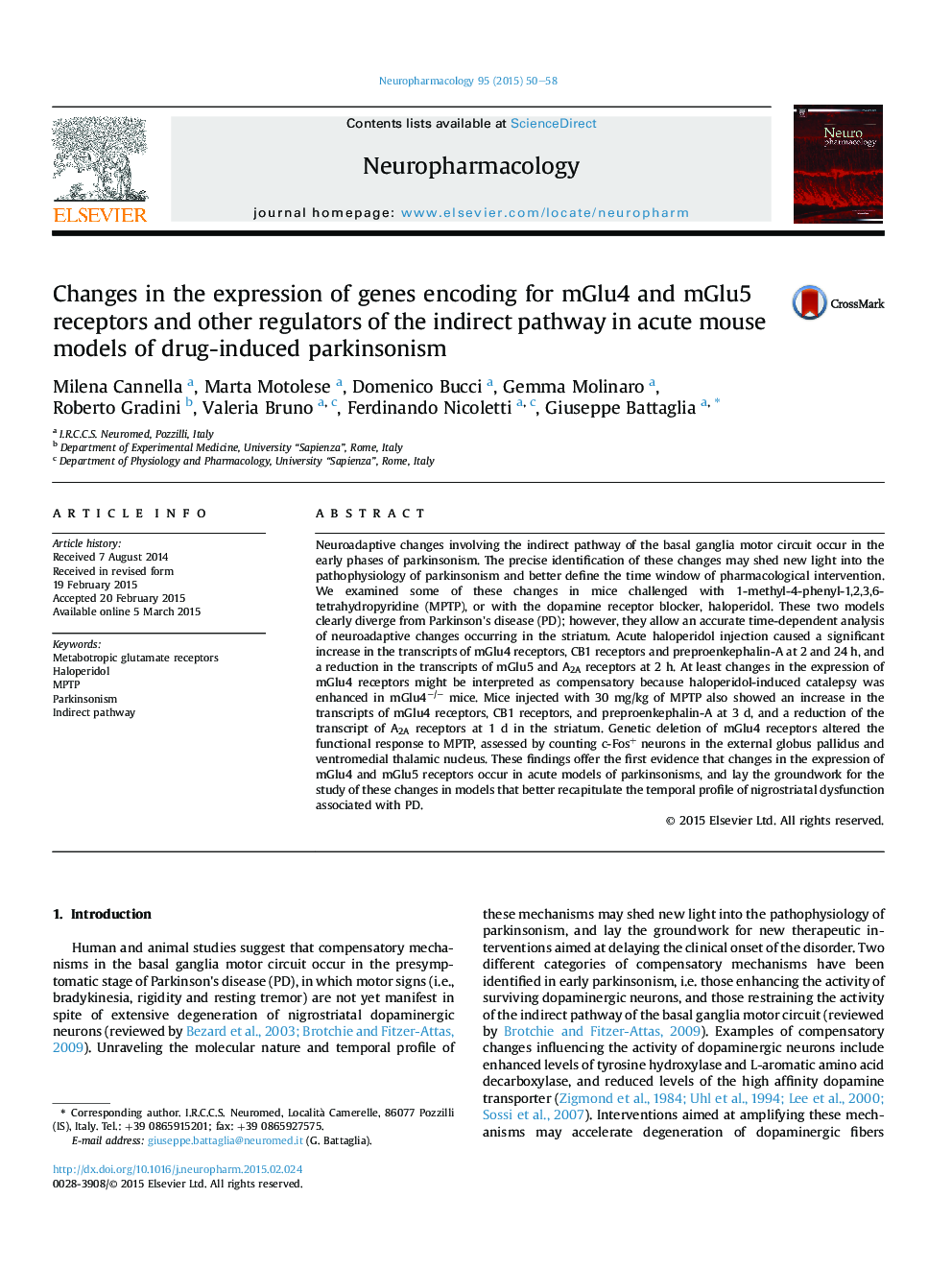| Article ID | Journal | Published Year | Pages | File Type |
|---|---|---|---|---|
| 5813648 | Neuropharmacology | 2015 | 9 Pages |
Abstract
Neuroadaptive changes involving the indirect pathway of the basal ganglia motor circuit occur in the early phases of parkinsonism. The precise identification of these changes may shed new light into the pathophysiology of parkinsonism and better define the time window of pharmacological intervention. We examined some of these changes in mice challenged with 1-methyl-4-phenyl-1,2,3,6-tetrahydropyridine (MPTP), or with the dopamine receptor blocker, haloperidol. These two models clearly diverge from Parkinson's disease (PD); however, they allow an accurate time-dependent analysis of neuroadaptive changes occurring in the striatum. Acute haloperidol injection caused a significant increase in the transcripts of mGlu4 receptors, CB1 receptors and preproenkephalin-A at 2 and 24Â h, and a reduction in the transcripts of mGlu5 and A2A receptors at 2Â h. At least changes in the expression of mGlu4 receptors might be interpreted as compensatory because haloperidol-induced catalepsy was enhanced in mGlu4â/â mice. Mice injected with 30Â mg/kg of MPTP also showed an increase in the transcripts of mGlu4 receptors, CB1 receptors, and preproenkephalin-A at 3Â d, and a reduction of the transcript of A2A receptors at 1Â d in the striatum. Genetic deletion of mGlu4 receptors altered the functional response to MPTP, assessed by counting c-Fos+ neurons in the external globus pallidus and ventromedial thalamic nucleus. These findings offer the first evidence that changes in the expression of mGlu4 and mGlu5 receptors occur in acute models of parkinsonisms, and lay the groundwork for the study of these changes in models that better recapitulate the temporal profile of nigrostriatal dysfunction associated with PD.
Related Topics
Life Sciences
Neuroscience
Behavioral Neuroscience
Authors
Milena Cannella, Marta Motolese, Domenico Bucci, Gemma Molinaro, Roberto Gradini, Valeria Bruno, Ferdinando Nicoletti, Giuseppe Battaglia,
